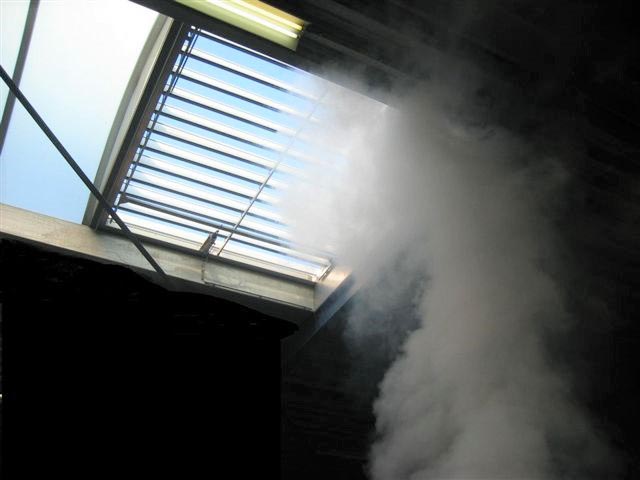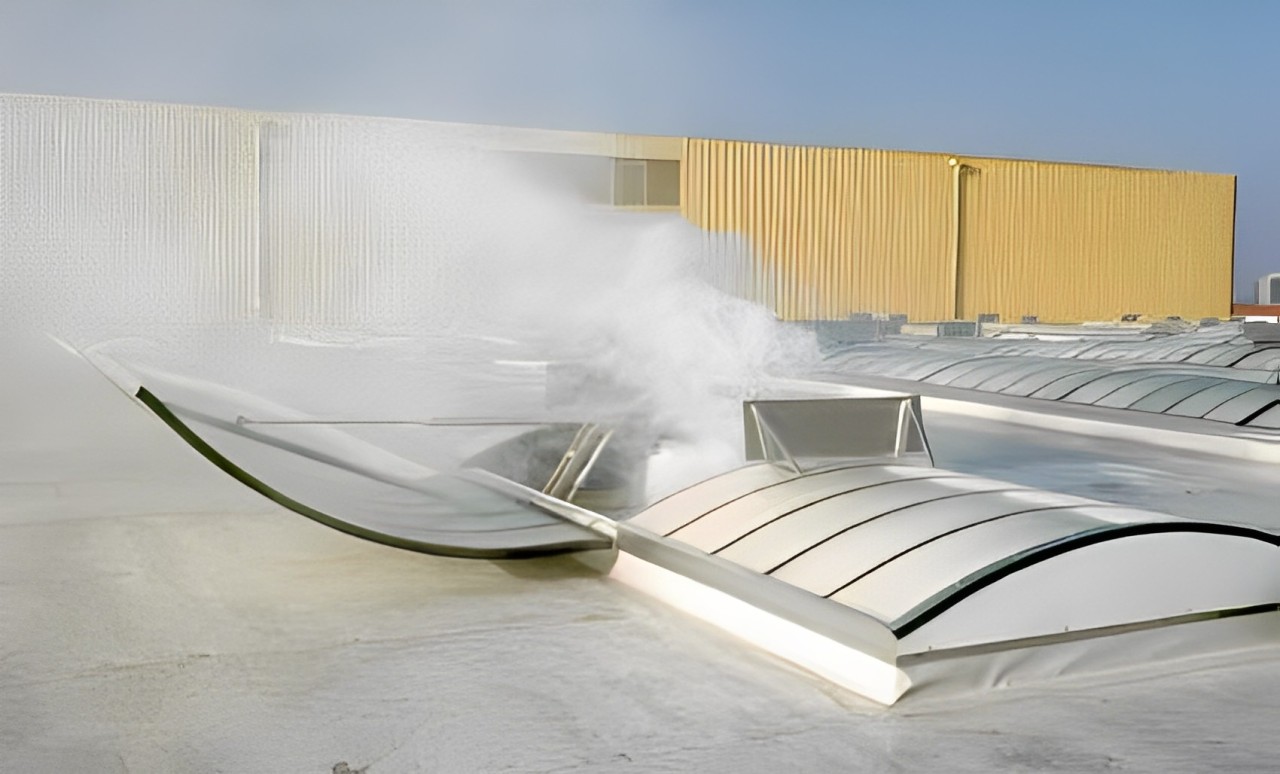Natural smoke control systems use the basic principles of thermal buoyancy (density difference) to allow smoke and heat to rise out of the building through Natural Smoke and Heat Exhaust Ventilators (NSHEVs), while fresh, cool air flows in at lower levels to create a cooler, smoke-free air layer, enabling occupants to evacuate the building safely.

Natural smoke control systems, though available in various configurations, operate through the same basic process:
- Fire Detection and Activation:
- A fire breaks out in an area of the building.
- Once triggered, either by fire and smoke detectors or manually at a call point, motorised (or pneumatic) actuators in the roof ventilators open, allowing the smoke and heat to naturally rise from the space below.
- Smoke Ventilation:
- The NSHEVs open to create a pathway for the hot smoke and gases to escape from the building. This vertical movement of smoke helps reduce the temperature and smoke density at the lower levels, ensuring that evacuation routes remain clear and safe.
- Formation of Smoke Compartments:
- Depending on the size of the room, the formation of smoke compartments is necessary to prevent the uncontrolled spread of smoke. This can be achieved through the building’s structural elements or additional smoke curtains, which make it easier to manage and exhaust the smoke.
- Introduction of Fresh Air:
- Fresh external air is drawn in via NSHEVs in adjacent smoke compartments. This influx of fresh air helps to push the smoke out and ensures that the lower levels of the building remain clear of smoke, providing a breathable environment.

Natural smoke control systems are an effective means of managing smoke and heat in the event of a fire. By leveraging the principles of thermal buoyancy, these systems facilitate the safe evacuation of occupants and provide a safer environment for firefighters.




